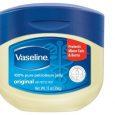There are many types of lubricants available. But two of the most popular are Vaseline and petroleum jelly. Yes, they are different and similar at the same time. In fact, many people mistake one for the other, although some know that Vaseline is a brand name. But can you use both as a lubricant?
Healthy skin should be made up of 64% [1] [2] water to keep it supple, strong and flexible. Unfortunately, the body loses a pint of water over time, causing the skin to dry. One way to minimize moisture loss is to moisturize with petroleum-based products.
The use of such a substance, however, may have an adverse effect, especially when used on other areas of the body, not just on the skin.
Vaseline vs. Petroleum Jelly: The Differences
Vaseline
- A brand name of petroleum jelly
- Made up of pure petroleum jelly with minerals and microcrystalline wax combined to make it smoother
- Available in different fragrances, such as baby powder and lavender oil
- Available in the forms of cream, lotion, and ointment
- Used as a lubricant, moisturizer, make-up remover, and lip balm
- Used to help protect minor burns and cuts, avoid rashes, remove stains, enhance hair, and prevent lids from getting stuck together
- Vaseline goes through a proprietary triple purification process to make it suitable for use with the skin
Petroleum Jelly
- Made up of a semi-solid, translucent mixture of hydrocarbons
- Raw petroleum jelly is stiff like cold wax and is colored black
- Extracted from real petroleum, which is why factory-made petroleum jelly smells like gas and oil
- Used to keep doors and hinges from squeaking
- Create a barrier to keep bacteria, air, and water out of a wound
Vaseline vs. Petroleum Jelly: The Similarities
- Introduced by Robert Cheesebrough in 1859
- Used as an ointment and lubricant
- Sticks to the skin and attracts dust particles, resulting in acne and other skin problems
- Good for moisturizing dry areas, sore or chapped skin
- Used as a base for making lip balm
- Not eco-friendly
Based on the information above, it is clear that Vaseline and petroleum jelly have slight differences, especially the part about the purification process. This is why Vaseline can dare to claim that it is safe to use as a lubricant. Petroleum jelly, on the other hand, needs to be dissected a little bit further.
Can you use petroleum jelly as a lubricant?
Yes and no.
Yes, because it is a hydrophobic substance that doesn’t break down under moist conditions, reduces friction upon application, and provides superior slickness when warmed up.
No, because there are plenty of reasons you should avoid using petroleum jelly as a lubricant, especially during sexual intercourse, as it will likely defeat the purpose of lubrication.
Unlike other forms of lubricants, petroleum jelly may cause more harm than good.
It is one of the ingredients in sexual lubricants to avoid.
There are 7 major ingredients in sexual lubricants that you should avoid – parabens, silicone oils, phenoxyethanol, glycerin and glucose, propylene glycol, chlorhexidine, and petroleum-derived ingredients.
Clearly, using petroleum jelly, whether Vaseline or not, on your genitals should be avoided. This is because petroleum jelly may contain impurities linked to certain health conditions, including cancer.
While petroleum jelly creates a barrier that can help open wounds heal and protect them from air and bacteria, the same barrier can impede normal skin function, preventing it from “breathing.” It is also harder to remove, even with soap and water, which is why it isn’t recommended as a sexual lubricant.
It repels moisture of all kinds.
Petroleum jelly is hydrophobic by nature, which explains why water simply slides past it. It’s not entirely a bad idea when used as a lube to reduce friction, if not for the waxy, hard-to-remove residue it leaves behind. Can you imagine having all that waxy substance left inside your genitals to accumulate over time?
It breaks down latex and polyisoprene condoms.
If you use petroleum jelly with condom made using latex and polyisoprene, the integrity will disintegrate within a few minutes of contact. This increases the chances of pregnancy and transmission of STDs and other infections.
It has been linked to the growth of yeast.
Who wants yeast infection? Using petroleum jelly will increase the possibility of bacterial vaginosis linked to pelvic inflammatory disease, which is why women are advised to use a lubrication other than petroleum jelly.
It is incompatible with many common sex toys.
Most of the sex toys on the market are made from rubber, latex, plastic, silicone or rubber, all of which breaks down when in contact with petroleum jelly. If you insist on using petroleum-based lubricants, your options are limited to glass or metal. However, there’s still a concern about washing off the waxy residues from your body’s sensitive areas.
It is harder to clean up afterward.
What makes intimate moments less intimate is the post-coital clean-up that could be harder and time-consuming where oil-based lubricants are involved. It will take more than just soap and water to scrub away greasy or sticky residues, which can kill the mood. And if you do manage to remove most of the sticky residue, there is still a possibility that the oily sensations can linger for a day or so.
Considering the pros and cons of petroleum jelly as a lubricant, it is best not to use it as lubrication, especially during sexual intercourse. In choosing alternatives, you should take into account the things that make lubricants safe for you, personally.
Ask the following questions:
- Are you allergic to any or all of its ingredients?
- What kind of sex toys or contraception are you going to use with the lubricant?
- Are you worried about the clean-up?
- Do you prefer a lubricant that you can use for something else?
- Do you prefer the organic or synthetic kind?
Although petroleum jelly has many applications, you should think twice about using it within the realms of sexual intercourse.
References
-
1. https://water.usgs.gov/edu/propertyyou.html
2. https://www.thoughtco.com/how-much-of-your-body-is-water-609406
3. https://www.vaseline.com/us/en/articles/products-and-ingredients/vaseline-healing-jelly-more-uses-than-you-thought.html
4. https://www.healthline.com/health/vaseline-as-lube





